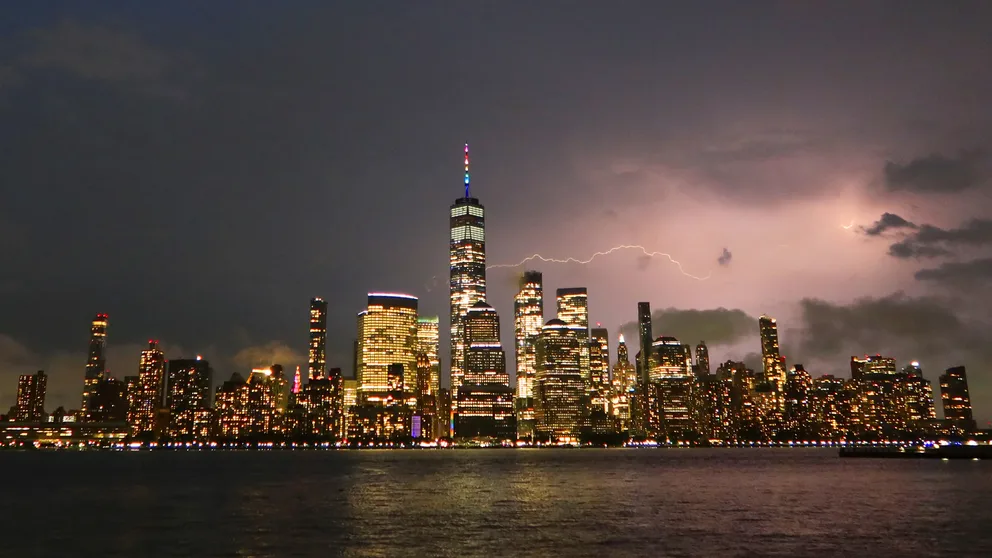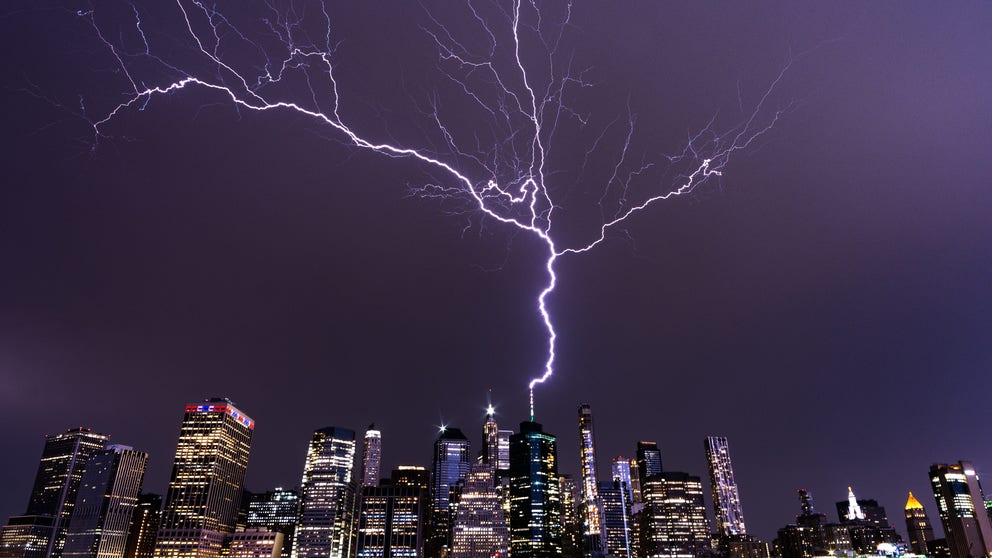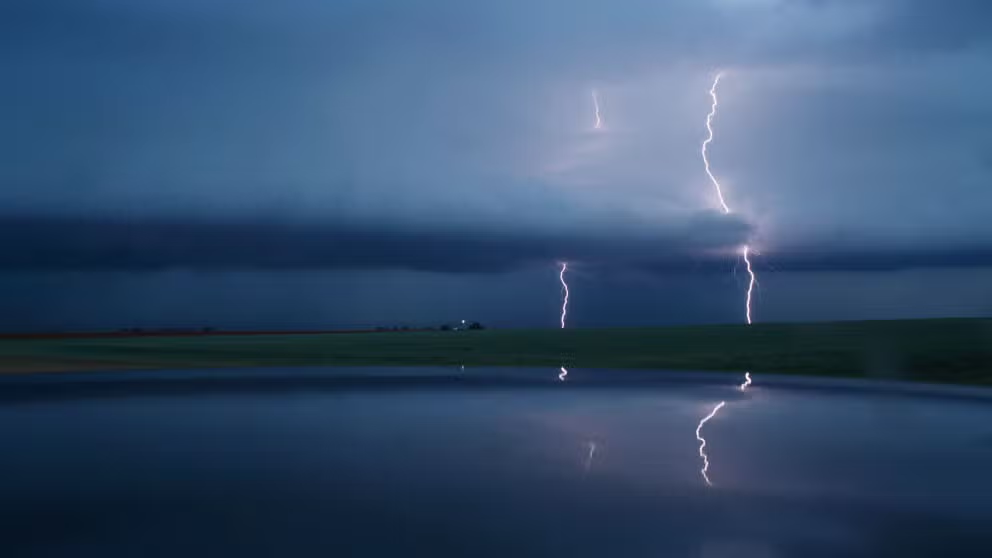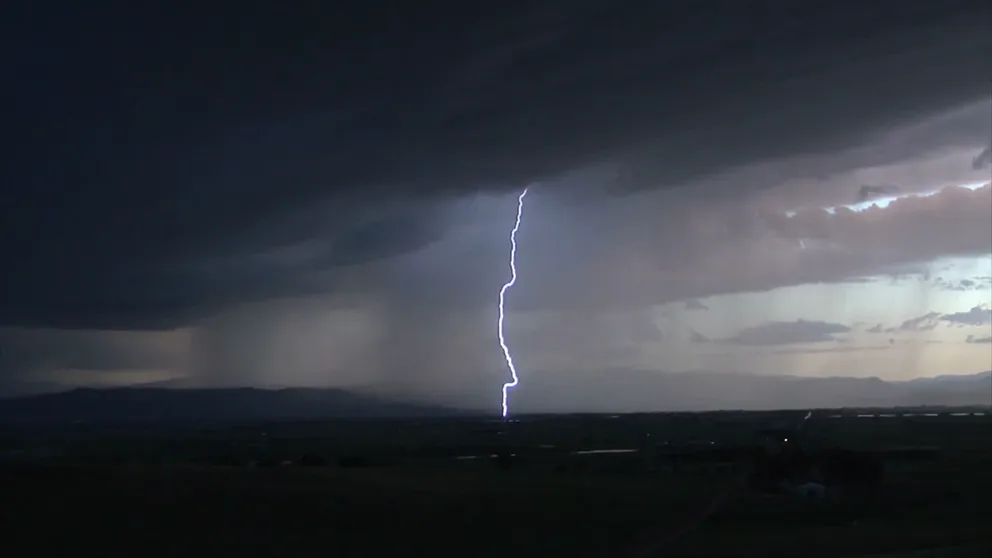Lightning deaths are on the rise. Here's what to do to stay safe when thunder roars
You might think the greatest risk of being hit by lightning would be from standing under a tree or being on open hillsides, but several lightning deaths have come during mundane outdoor tasks, highlighting the dangers of lightning no matter what you're doing outside.
The dangers of being outdoors during thunderstorms - even for a few moments
As we enter Lightning Safety Awareness Week, lightning safety experts stress that being outside anywhere is a dangerous risk when lightning is in the area.
A simple task such as walking the dog, loading your car, or taking a remote-controlled plane for a spin turned deadly for some who had ventured outside during thunderstorms over the past year.
Lightning deaths are back on the rise in the U.S., according to the National Lightning Safety Council. The agency counted 19 deaths across the nation last year from 15 separate thunderstorms -- nearly double the number of deaths recorded in 2021 (11), though still a bit below the 10-year average of 22 and roughly half of what they used to average just as recently as 2007.
You might think the greatest risk of being hit by lightning would be from standing under a tree or being on open hillsides, but several lightning deaths have happened during mundane outdoor tasks, highlighting the dangers of lightning no matter what you're doing outdoors.
NEARLY 200 MILLION LIGHTNING STRIKES HIT THE U.S. IN 2022. HOW MANY HIT YOUR STATE?
WATCH: Nature's own fireworks for the Fourth of July
As we celebrate Independence Day, we've compiled our favorite "natural fireworks" lightning videos as submitted from viewers around the nation and world.
A Kentucky man died in July while flying a remote-controlled airplane. A woman died from a lightning strike in California while walking her dogs. An Ohio man was fatally struck while loading tools into a van. A Florida woman was struck by lightning and died while walking kids home from school. A 13- and 11-year-old boy were killed by lightning while rowing on a Florida lake in September.
Three people, including an elderly couple, died when lightning struck at Lafayette Park near the White House in August – the first lightning deaths in Washington since 1991. In years past, people have been killed by lightning while taking out the trash or running outside to retrieve some forgotten eyeglasses.
‘Every storm has a first flash of lightning’
While in some cases victims were struck despite only being outside for moments, John Jensenius with the National Lightning Safety Council said people wait "far too long" when storms approach to get to a safe place. That leaves them in a dangerous and potentially deadly situation.
"If you are outside, you are vulnerable to a possible lightning strike," Jensenius told FOX Weather.
He points to their successful safety message: "When thunder roars, go indoors."
"That simple message can save many lives," he said.
LIGHTNING CHASER SHARES HOW TO CAPTURE NATURE'S FURY ON CAMERA
Jansenius said another problem is most people think lightning is farther away than it actually is. If you don’t have a radar app handy, you can count the seconds between seeing the flash of lightning and hearing the thunder – every 5 seconds of delay equals a mile of distance. A 12-second delay means lightning is just 2.4 miles from your location. If within five seconds, the lightning flash is within a mile.
"Chances are that if you are hearing any thunder, even a distant rumble, you're within striking distance of the storm," Jensenius said. "Many people don’t understand that lightning can strike more than 10 miles from the rain area in a thunderstorm and that even a distant rumble of thunder should serve as an immediate warning to get inside."
7 facts about 2022 Lightning study in US
Vaisala's annual lightning report is out, tallying up how many strikes hit the US this year (nearly 200 million!) and which states were struck the most.
He added: "Every storm has a first flash of lightning."
What if you're out golfing or hiking or just someplace where you're out in the open?
"The key to safety is to plan ahead to ensure that you can get to a safe place," Jensenius said. His advice: Consider postponing outdoor events if thunderstorms are in the forecast. If at an outdoor event, monitor radar or lightning data on your phone, and get inside if the sky looks threatening, or you hear thunder.
"If someone is caught outside, we recommend running as fast as possible to get to a safer place."
That safer place means inside a car or inside a building. You should wait until 30 minutes after the last thunder to resume outdoor activity.
Ditch the ‘crouch' and focus on shelter
Decades ago, there was advice to crouch down if you were caught out in the open. Scientists now say that offers no protection, and your goal must be to get inside as soon as possible. To hammer home the point, the latest guidance from NOAA suggests a group of people caught in the open should, "spread out so that you increase the chances for survivors who could come to the aid of any victims from a lightning strike."
Even when you're inside, there are places to avoid.
Where did all the thunderstorms happen last year?
2022 brought hundreds of millions of lightning strikes across the U.S.
"If lightning strikes your home or near your home, it can follow wires, plumbing, or metal conductors into your home," Jensenius said. That means staying away from anything plugged into a wall or connected to outside cables or antennas.
"Also, any plumbing in the house could become energized in a lightning strike. You shouldn't wash dishes or take a shower."
HOW DO LIGHTNING RODS WORK TO PROTECT HOMES AND BUILDINGS?
There are many places that people might think offer protection but don't.
"Many people falsely think that rain shelters, balconies, and building overhangs will keep you safe from lightning. They will not," Jensenius said. "While they may keep you dry, they do not provide an adequate level of lightning protection."
Lightning strikes are survivable
While there have been dozens of deaths each year due to lightning, most survive a lightning strike. Jensenius said some 90% survive the strike, but may suffer lifelong neurological problems.
WHAT HAPPENS WHEN SOMEONE IS STRUCK BY LIGHTNING
He added the most common cause of death when someone is struck is cardiac arrest.
"Many victims can be revived with CPR," he said. "If someone is struck, call for help and begin CPR if necessary."
‘I THOUGHT I KNEW WHAT FEAR WAS’: MARINE VET SAVES DAUGHTER AFTER LIGHTNING STRIKE STOPS HER HEART
Lightning density is greatest in Florida, followed by Louisiana, Mississippi, Oklahoma and Arkansas. It is least frequent along the Pacific Coast and far northern New England coasts, according to data provided by Vaisala. Thunderstorms occur in all 50 states.



